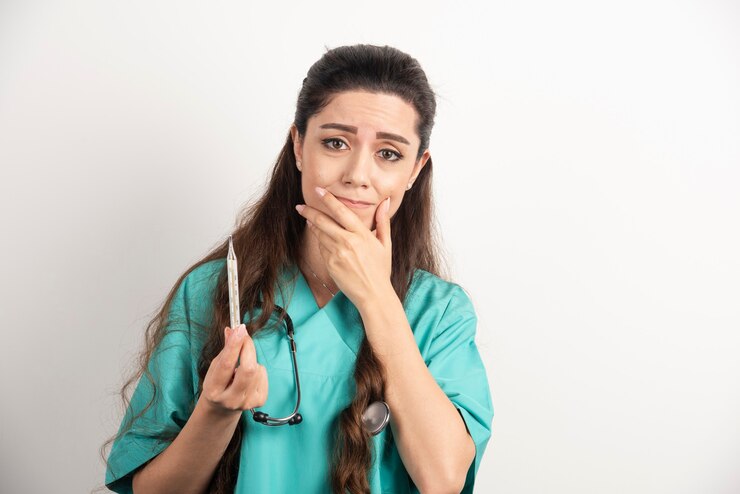Bruxism is a dental problem that consists of clenching and grinding the upper and lower teeth together, sliding them back and forth over each other. It is also one of the most common sleep disorders, affecting almost 20% of the population and there are generally several approaches to treating this condition.
Although it is true that it can also appear during the day, bruxism is basically a sleep problem. However, scientists such as Klasser, GD, Rei, N. and Lavigne, GJ (2015) point out in a study that it is a multisystemic condition. Psychological factors, our sleep mechanics and certain physiological aspects would be behind this reality.
Bruxism affects men and women equally. Its prevalence decreases with age, with 14% of children having it, 12% of adolescents and only 8% of adults. It should be noted that early diagnosis is essential to avoid dental health and sleep quality problems.
Causes and symptoms of bruxism
Since bruxism occurs mainly while we sleep, it is common not to know that we suffer from it. We are also dealing with a type of unconscious behavior and that is why we do not always relate the symptoms with this condition. Likewise, there are those who confuse the discomfort with simple tiredness , stress or bad posture.
Let’s now look at some symptoms of bruxism.
Musculofacial pain
If you wake up with pain in your facial muscles or a headache, you may be experiencing the most typical symptoms of bruxism. Bruxism causes your teeth to hurt or become loose, literally crumbling or pulverizing. It also destroys the bone that supports your teeth and causes joint problems, such as temporomandibular joint syndrome.
Those affected rarely notice that they are grinding or clenching their teeth. They are also unaware of the symptoms because they occur unconsciously in most cases during sleep. Only when teeth grinding exceeds a certain point can tension or hardening of the facial muscles appear.
Sometimes the teeth, jaw joints, face, temples and ears hurt. In certain cases, the pain can affect the entire head. If teeth grinding continues for a long time, the tension can also spread to the neck and shoulders.
Tinnitus and bruxism
One of the most common symptoms of bruxism is the classic tinnitus. We must remember that the ear and its entire structure are connected to the jaw through two systems: the muscular and the neurological. Exerting tension every night with our jaws ends up generating the classic ringing in the ears.
Studies such as those carried out at the Department of Oral and Maxillofacial Sciences, Sapienza University of Rome, Italy, recommend that we visit specialists if we suffer from tinnitus. Using a splint can make this problem improve.
Causes of bruxism
The exact causes of bruxism are still not entirely clear. That is why we often talk about multifactorial origins. However, these would be the most common,
- Stress and anxiety.
- Period of awakening during the light sleep phase, the most important expression of the disorder.
- Sleep on your back.
- Habits we have to help us fall asleep.
- Improper alignment of teeth.
Treatment of bruxism
The appropriate treatment will be closely related to the cause, as it is about getting to the root and not just trying to stop the symptoms. Relaxation techniques can help a lot in this regard, since stress seems to be the main cause of bruxism. Any initiative that effectively reduces stress can help, such as listening to music, reading, walking.
In cases where the key factor is a psychological disorder, such as anxiety, it is recommended to learn relaxation techniques and complementary physiotherapy, treating the acute phases of pain with anti-inflammatories and muscle relaxants.
Psychological therapy helps reduce bruxing episodes , as the patient learns to self-relax and self-control . Actions aimed at reducing anxiety allow modulating the influence exerted by the hypothalamus and the limbic system on the regulation of muscle tone.
Treatment for bruxism aims to reduce symptoms and help preserve teeth. If the disorder persists, the patient may be referred to a specialist: an otorhinolaryngologist, a sleep doctor, a physiotherapist or a psychologist.
All sources cited were thoroughly reviewed by our team to ensure their quality, reliability, timeliness and validity. The bibliography of this article was considered reliable and of academic or scientific accuracy.
- Alcolea Rodríguez, JR, Herrero Escobar, P., Ramón Jorge, M., Sol, L., Trinidad, E., Pérez Téllez, M., & Garcés Llauger, D. (2014). Association of bruxism with biosocial factors. Medical Scientific Courier , 18 (2), 190-202.
- Arreaza, A., Correnti, M., & Battista, V. (2010). Anxiety as a personality trait in a group of patients with oral lichen planus. Acta odontol. venez , 48 (2).
- Da Acosta Álvarez, A., Alchieri, A., & Joao, C. Anxiety levels and social impact on people with bruxism. Interpsiquis [Internet]. 2012 [cited 19 Oct 2012][approx. 8 screens].
- Pérez, G., Vázquez, L., & Vázquez, Y. (2007). Bruxism: Somatization of stress in dentistry. In Rev Forum scientific (Vol. 21, No. 52, p. 5).
- Pinto, F., & Washington, W. (2014). Bruxism and related pathologies due to overcrowding and psychophysical stress in patients of the social rehabilitation center No. 2 of Quito, in the period October 2013-March 2014 (Bachelor’s thesis, Riobamba: Universidad Nacional de Chimborazo).
- Segura, MG, Rodríguez, MO, & Rojas, PD (2003). Combined treatment of bruxopathic patients with occlusal splints and psychotherapy. Correo Cientif Med Holguín , 7 , 12.
- Vicuña, D., Id, M.E., & Oyonarte, R. (2010). Associations between clinical signs of bruxism, anxiety and masseteric electromyographic activity using the bite strip® device in adolescents in the last year of secondary school. International journal of odontostomatology , 4 (3), 245-253

